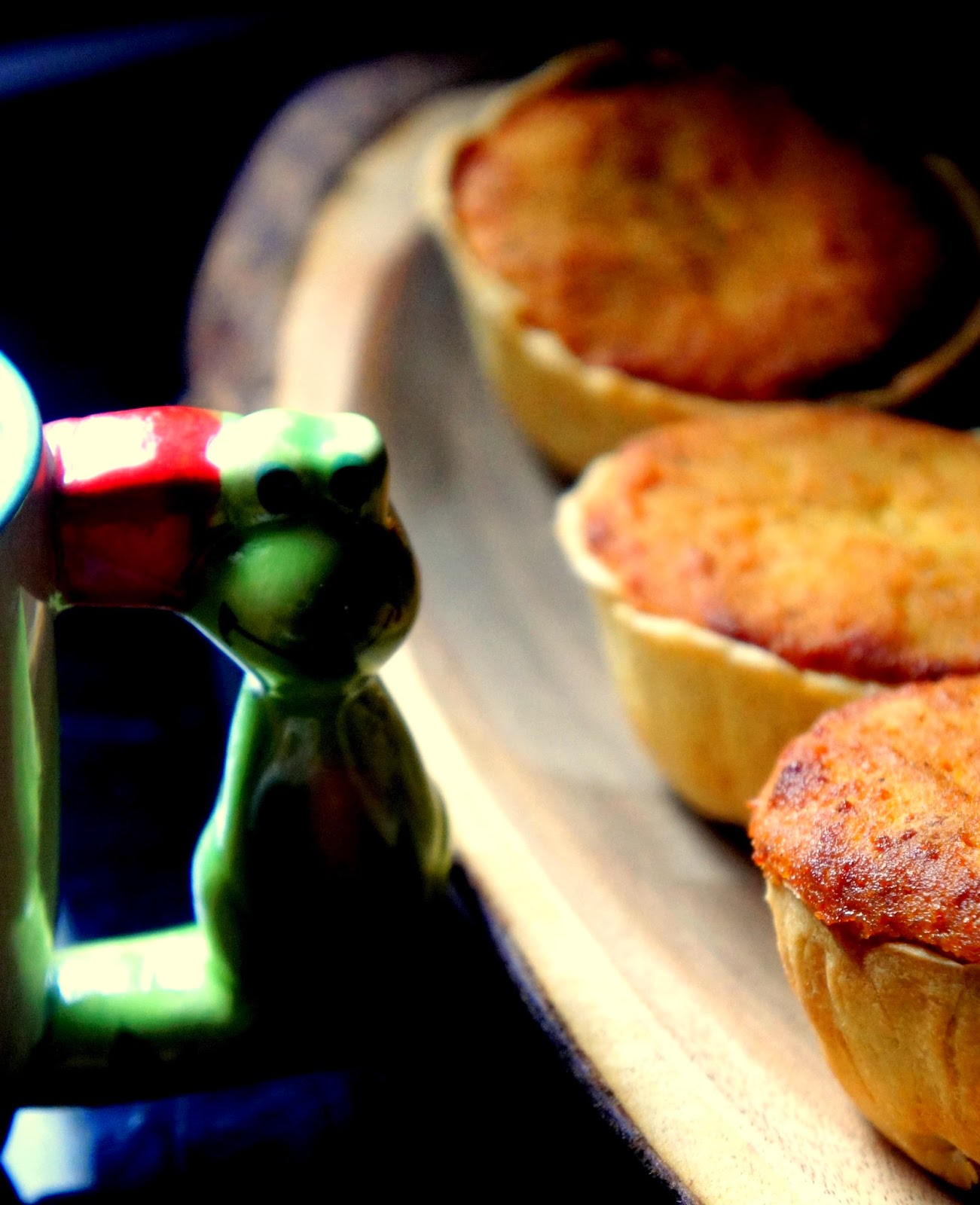I know Portugal's future in this World Cup is as bleak as bleak can be, but that shouldn't make me break my loyalty pledge. What would that say about me? So, I have decided to cheer harder. And I am going to do so with these little beauties, Portuguese cheesecake tarts, Qeijadas de Sintra.
I was rummaging through recipes and books, hunting for recipes from different countries, which would feature on my World Cup special series and I came across this recipe in a book called Eat Portugal by Célia Pedroso & Lucy Pepper. The book, in fact, has a number of good Portuguese recipes but I settled for this one because I have always liked the idea of cheesecake in a tart shell, only this turned out to be very different from what I had imagined. But no less delicious.
Now, as I went through the ingredients list though, my heart sank. What's queijos frescos? I had no clue. This is the chief ingredient, by the way. Ah! Portuguese fresh cheese! Once I had solved that the question was where am I going to find this one. I sulked. But only for a moment. It struck me how the Portuguese had introduced the art of cheese making in Eastern India. In fact, the Portuguese introduced chhana or cottage cheese to the Bengalis, who initially resisted the idea of consuming anything that was made by splitting milk but ultimately fell in love with it, irrevocably. The rich tradition of Bengali sweets owes its origin to the Portuguese. There wouldn't be any rosogolla id Vasco deary had not landed in the court of Zamorin. So, my heart leapt as I came to realise and conclude that queijos frescos was nothing but good old chhana or cottage cheese.
In this connection, I'd like to emphasize the immense influence of Portuguese cuisine on Indian food really. That said, the other thing that the Portuguese left us with, and something I am crazy about, is the smoky, salty and delightfully crumbly Bandel cheese, named after the Portuguese colony in Bengal, Bandel. I was introduced to it by my dear friend Angona, and I couldn't stop thanking her. But that's another story.
Now about the Queijadas de Sintra, it's a kind of queijadas (cheesecake tarts) made in the beautiful town Sintra, also a Cultural Landscape UNESCO World Heritage Site since 1995, in western Portugal. Interestingly it seems, I was reading, the origin of these delicious roundels can be traced back to the middle ages and what's even more interesting is that there are official documents stating that back in 1227 these Queijadas were used to pay part of the fixed-rent for land/ property in the Sintra region.
So, naturally I was excited about making them. And the end product made me and everybody at home very happy. Have you tasted Chhena Pora? Yes Odisha's famous sweet, which literally translates to burnt cheese, well, the best I can explain Queijadas is...Cinnamon flavoured chhana pora in crispy tart shells! Only this recipe uses eggs.
Ingredients
For the tart shell
All Purpose Flour - 250 g
Butter - 1 tbsp
Warm water
Salt - 1/2 tsp
For the filling
Cottage cheese - 450 g
Sugar - 350 g
Cinnamon powder - 1 tsp
Egg Yolks - 4
All purpose flour - 60 g
Method
To make the Tart shell
Make the dough for the tart shell a day in advance.
Melt the butter. Pour the flour in a large bowl and make a well in the middle. Pour in the melted butter and with a wooden spoon mix vigorously, while slowly adding warm water until its firm.
Wrap in clingfilm and refrigerate.
To make the filling and the Queijadas
Beat the cottage cheese and sugar together.
Then beat in the egg yolks, four and cinnamon powder.
Preheat oven at 180 degree centigrade.
Butter your tart shells and keep ready. Now roll out the tart dough and cut out in circles big enough for the tart shells, with a pastry cutter or simply a glass, and line your tart shells with the dough.
Fill the tarts with the cottage cheese filling and bake at 180 degree centigrade until the top is rich golden brown, approximately 20-25 minutes.





No comments:
Post a Comment